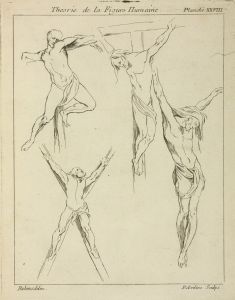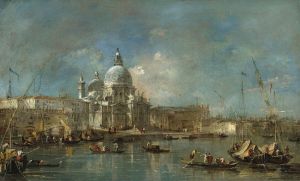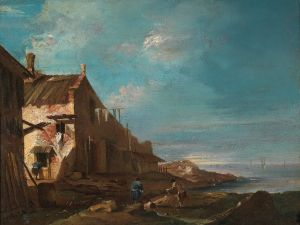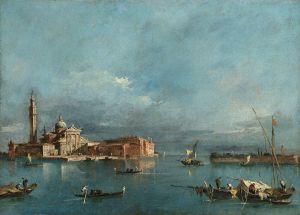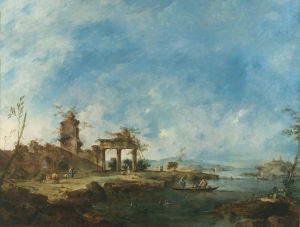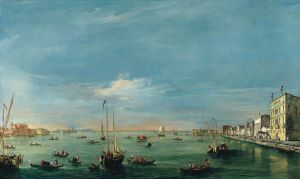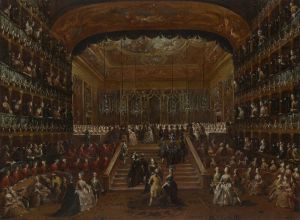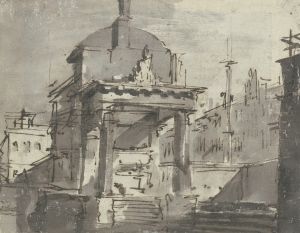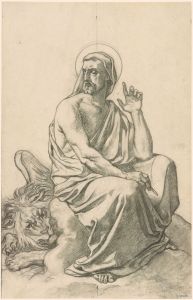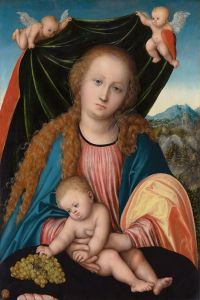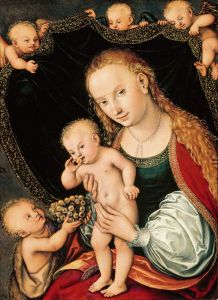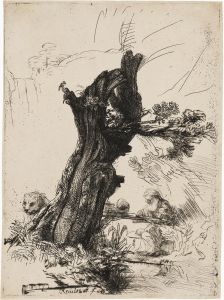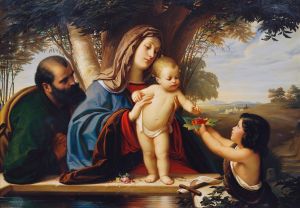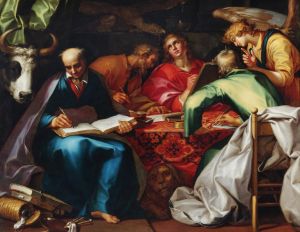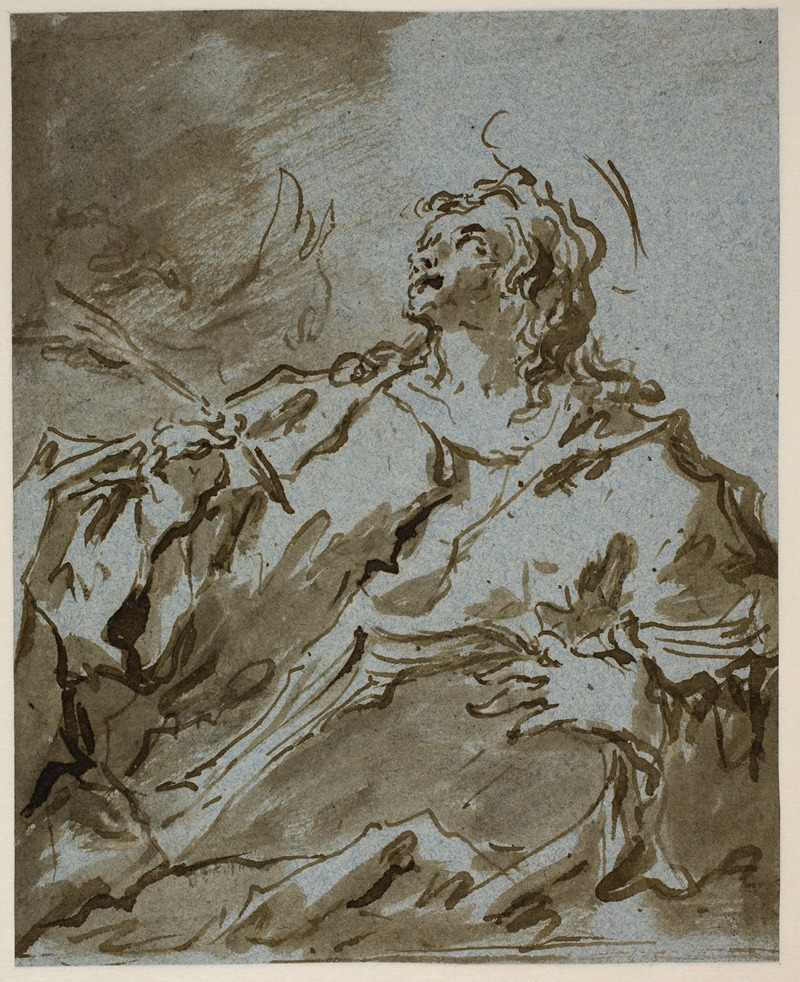
Evangelisten Johannes
A hand-painted replica of Francesco Guardi’s masterpiece Evangelisten Johannes, meticulously crafted by professional artists to capture the true essence of the original. Each piece is created with museum-quality canvas and rare mineral pigments, carefully painted by experienced artists with delicate brushstrokes and rich, layered colors to perfectly recreate the texture of the original artwork. Unlike machine-printed reproductions, this hand-painted version brings the painting to life, infused with the artist’s emotions and skill in every stroke. Whether for personal collection or home decoration, it instantly elevates the artistic atmosphere of any space.
Francesco Guardi, an eminent Venetian painter of the 18th century, is renowned for his captivating vedute, or cityscapes, of Venice. However, his oeuvre also includes religious works, among which is the painting "Evangelisten Johannes" (Saint John the Evangelist). This painting is a testament to Guardi's versatility and his ability to convey religious themes with the same finesse he applied to his more famous cityscapes.
"Evangelisten Johannes" depicts Saint John the Evangelist, one of the twelve apostles of Jesus and traditionally considered the author of the Gospel of John, the Epistles of John, and the Book of Revelation. In Christian iconography, Saint John is often portrayed as a youthful figure, sometimes accompanied by an eagle, which symbolizes his high-soaring theological insights.
The painting is characterized by Guardi's distinctive style, which combines a delicate handling of light and shadow with a dynamic composition. Although primarily known for his landscapes, Guardi's religious paintings demonstrate his ability to capture the human figure with sensitivity and emotion. In "Evangelisten Johannes," Guardi employs a soft color palette, which imbues the work with a sense of serenity and contemplation, befitting the spiritual nature of the subject.
Guardi's approach to religious painting was influenced by the Venetian tradition, which emphasized color and light over line and form. This tradition can be traced back to earlier Venetian masters such as Titian and Tintoretto, whose works also focused on the emotional and atmospheric qualities of religious narratives. In "Evangelisten Johannes," Guardi continues this tradition, using light to highlight the saint's contemplative expression and to create a sense of divine presence.
The exact date of the painting is not well-documented, but it is believed to have been created during the latter part of Guardi's career, a period when he was increasingly sought after for both his vedute and his religious commissions. This period was marked by a growing interest in religious art across Europe, as the Catholic Church sought to reaffirm its influence through the commissioning of artworks that inspired devotion and piety.
"Evangelisten Johannes" is an example of Guardi's ability to transcend the boundaries of genre, demonstrating his skill not only as a landscape painter but also as a master of religious iconography. The painting reflects the broader cultural and religious context of 18th-century Venice, a city that was both a hub of artistic innovation and a center of Catholic devotion.
Today, Francesco Guardi is celebrated as one of the last great masters of the Venetian school, and his works continue to be studied and admired for their technical brilliance and emotional depth. "Evangelisten Johannes" stands as a testament to his artistic versatility and his ability to convey complex religious themes with clarity and grace. While Guardi's vedute remain his most famous contributions to art history, paintings like "Evangelisten Johannes" reveal the full scope of his talent and his enduring legacy in the world of art.





